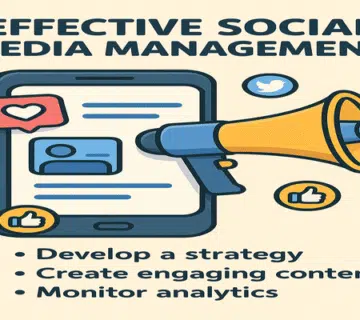direct marketing
Direct Marketing: Effective Strategies to Increase Sales
Introduction to Direct Marketing
Direct marketing is a strategy that requires direct communication between brands and consumers, where companies target audiences on an individual level. This type of marketing enables the collection of valuable customer data and the personalization of offers and messages to meet their unique needs. The importance of this field lies in enhancing effective communication, increasing sales, and building long-term customer relationships.
Over the past decades, direct marketing has evolved significantly, starting with traditional methods such as direct mail and telemarketing, and advancing to sophisticated digital techniques. Today, email marketing, social media, and paid online advertising are considered effective direct marketing tools. These tools provide opportunities for companies to interact with their audiences directly, increasing the likelihood of conversions and positive engagement.
The goals of direct marketing are varied; they include increasing brand awareness, boosting sales, encouraging customers to take specific actions, and gathering comprehensive feedback on business performance through customer responses and comments. There are several reasons behind the growth of direct marketing in today’s world. For example, more companies are using customer data to enhance their marketing strategies and achieve tangible results.
Understanding direct marketing and how to apply it effectively is a fundamental step for any organization seeking growth and prosperity in today’s competitive business environment. By using appropriate direct marketing tools, companies can deliver personalized experiences that meet customer needs, ultimately providing long-term benefits.

Types of Direct Marketing
Direct marketing is one of the effective strategies that enhance companies’ efforts in reaching their target audiences and increasing sales. The types of direct marketing are diverse, allowing marketers to choose the most suitable method to achieve their specific goals. Below are some of the most prominent types:
One common type is email marketing, which relies on sending personalized messages to potential customers. These messages usually include special offers or information about new products. This type stands out for its ability to measure results through open and click-through rates, which helps improve future campaigns.
SMS marketing is another increasingly popular type of direct marketing. By sending short text messages to mobile phones, companies can communicate directly and quickly with their customers. This method helps inform customers about timely offers or important alerts and tends to have high response rates.
Direct advertising, whether online or through traditional media such as TV and newspapers, is also part of direct marketing tools. These ads aim to build brand awareness and prompt consumers to make direct purchases. Digital ads are particularly effective due to their ability to target specific audience segments based on interests and behaviors.
In conclusion, the various types of direct marketing provide diverse options for companies to achieve their goals and effectively reach consumers. Choosing the right type requires a deep understanding of the target market and the available channels to achieve optimal results.
Successful Direct Marketing Strategies
Direct marketing strategies are crucial elements that contribute to business success and increased sales. Among these strategies, personalizing customer messages stands out as a key factor. Personalization means delivering tailored content to each customer based on their interests and needs, which enhances the effectiveness of marketing campaigns. For instance, using customer purchasing behavior data can help direct offers more accurately, increasing conversion opportunities.
Data and analytics also play an essential role in direct marketing. By collecting and analyzing customer data, companies can identify patterns and trends that help understand market behavior. This understanding leads to data-driven decisions, such as choosing the right time to launch ad campaigns or refining offers. Studies show that companies relying on data in their marketing strategies enjoy a significant competitive advantage.
Additionally, improving user experience can boost the impact of direct marketing. Brands should provide smooth and engaging experiences, whether through websites or apps. Interfaces should be user-friendly and offer clear, quick information about products, along with fast payment options and instant support. This attention to customer experience helps build strong loyalty and encourages repeat purchases.
In summary, using these strategies harmoniously helps achieve direct marketing objectives, leading to business growth and increased profits. Such strategies and tools are essential for responding to market changes and achieving sustainable success.
Challenges in Direct Marketing
Companies practicing direct marketing face several challenges that can affect the effectiveness of their campaigns. The first of these challenges is customer resistance. Many consumers tend to have negative perceptions of direct marketing tactics such as cold calls or unsolicited emails. Therefore, it’s important for companies to design respectful marketing campaigns that provide added value to gain consumer trust.
Technical aspects also present a significant challenge, as direct marketing requires the use of various tools such as customer relationship management (CRM) systems and analytics software. Companies often struggle with integrating these tools with their existing systems, which can lead to data loss or inaccurate information. This requires time and resources to train staff and update systems to ensure the success of direct marketing strategies.
Moreover, companies must comply with local and international data protection and privacy laws. With stricter regulations such as the General Data Protection Regulation (GDPR) in the European Union, marketers face additional pressure to ensure that all marketing activities comply with the applicable laws. This shift may require adjustments to direct marketing strategies to meet legal standards, adding further challenges for companies.
Overall, understanding these challenges provides individuals and organizations aiming to adopt direct marketing with a clear vision of how to align their strategies, systems, and data analysis with their marketing goals. While these challenges may seem daunting, proactive handling can lead to positive sales results and business growth.
The Importance of Data and Analytics
Data is a fundamental element in the direct marketing process, playing a central role in understanding customer behavior and preferences. Direct marketing offers the opportunity to communicate effectively with the target audience by tailoring campaigns based on collected data. Through this data, companies can identify customer desires and needs, helping improve marketing tactics and thus achieve direct marketing goals.
Data is typically gathered from multiple sources, such as websites, social media, and surveys. This data can be used to segment customers into different groups based on specific criteria like age, gender, interests, and location. This segmentation helps companies apply direct marketing tools more effectively, enabling them to tailor marketing messages to suit each targeted group.
After collecting data, companies must analyze it efficiently. Data analysis tools such as Google Analytics or CRM platforms can be used to track and analyze user behavior. Through data analysis, companies can understand the factors influencing customer engagement with campaigns. Analytics can also reveal reasons behind the growth of direct marketing, helping businesses adjust their strategies and innovate in delivering offers and services.
By using the best analytical techniques, companies can enhance their direct marketing strategies, improving their ability to target customers more accurately, convert potential customers into actual ones, and increase overall sales.
Direct Marketing in the Digital Age
In recent years, direct marketing has undergone a major transformation due to technological advancements and the emergence of digital tools. The use of digital methods in direct marketing has gained momentum, prompting companies to adopt new strategies aimed at reaching consumers more effectively. One prominent trend is the use of artificial intelligence, which helps personalize promotional messages and analyze consumer behavior more precisely. With AI tools, marketing campaign efficiency can be improved, contributing to faster achievement of direct marketing goals.
Moreover, social media plays a key role in enhancing direct marketing. On platforms like Facebook, Instagram, and Twitter, brands can build direct relationships with customers, increasing their interaction with the content provided. Using content marketing on these platforms helps raise brand awareness and serves as an effective tool for achieving direct marketing objectives. This approach allows companies to monitor and analyze audience reactions accurately, enabling them to adjust their strategies accordingly.
In addition, digital tools offer precise targeting capabilities, maximizing the impact of marketing campaigns. Through email campaigns and personalized content, businesses can reach consumers in ways that align with their needs and desires. With the growing reliance on data and analytics, companies are now able to present marketing offers that cater to specific interests, reflecting the importance of direct marketing in the digital age. These tools are vital for achieving growth and expansion in modern markets, ensuring sustained strong performance in direct marketing.
How to Measure the Effectiveness of Direct Marketing
Measuring the results is essential in direct marketing to understand how successful different campaigns are in achieving marketing goals. To assess the effectiveness of direct marketing, marketers rely on a set of key performance indicators (KPIs). These include open rate, response rate, and return on investment (ROI), each of which provides important insights into campaign performance.
The open rate is one of the most prominent metrics used to determine audience interest in the messages sent. It is calculated by dividing the number of opened messages by the total messages sent. Monitoring this rate can reflect how effective efforts are in capturing attention. The response rate measures the number of individuals who took a prompted action, such as clicking a link or making a purchase after receiving the message. This metric is crucial as it shows how consumers interact with the campaigns, helping identify areas for improving direct marketing strategies.
Ultimately, ROI is one of the main metrics marketers should focus on. It is calculated by dividing the profits generated by the campaign by the total campaign cost. This metric helps evaluate the financial feasibility of various strategies. By analyzing the results of these metrics, marketers can refine and strengthen the direct marketing tools they use in the future, ensuring effective and rational achievement of marketing goals. This type of in-depth analysis can lead to an immediate increase in the effectiveness of future campaigns and enhance overall performance.
Common Mistakes to Avoid
Direct marketing strategies are powerful tools for increasing sales, but there are many mistakes that companies may make which can hinder the success of these strategies. One of the most notable mistakes is not setting clear goals. Direct marketing goals should be specific, measurable, realistic, and time-bound. Without clear objectives, it becomes difficult to measure success and analyze performance.
Another common mistake is not knowing the target audience. Understanding your customers is crucial to effectively applying direct marketing strategies. If you lack accurate information about customer preferences, your campaigns are likely to fail. Therefore, conducting comprehensive market research before launching any campaign and building detailed audience profiles is essential.
Additionally, using inappropriate communication channels with the audience is a major mistake. Failing to choose the right tools for direct marketing—whether email, phone calls, or social media ads—can lead to missed sales opportunities. It’s important to evaluate different channels and choose the most suitable ones for your target audience to ensure effective reach.
Direct marketing also requires avoiding information overload. Providing excessive or complex information can overwhelm customers. It’s better to simplify messages and focus on the key benefits that the consumer can gain from the offered product or service. By avoiding these mistakes, companies can enhance their direct marketing strategies and achieve tangible sales growth.

Conclusions and Takeaways
Throughout this article, we explored various topics related to direct marketing, a strategy considered one of the most effective methods for increasing sales and strengthening customer relationships. We began by highlighting the objectives of direct marketing, which focus on improving consumer interaction and raising brand awareness, contributing to tangible business performance results.
We also outlined the reasons behind the growth of direct marketing in recent years, emphasizing the role of technology and direct marketing tools that facilitate positive outcomes. With tools like email, text messaging, and social media platforms, it has become possible to reach wider audiences than ever before, thereby increasing opportunities to achieve desired sales.
Furthermore, we discussed direct marketing strategies that ensure customer needs and expectations are effectively met. It is important for marketers to adapt to market developments and stay informed about the latest trends in consumer behavior. Therefore, continuous learning and adapting to market changes are essential.
In conclusion, direct marketing is a powerful tool for companies seeking to boost customer engagement and increase sales. With a thorough understanding of direct marketing tools and objectives, marketers can define effective strategies that lead to the desired success. Thus, companies must invest in improving their staff’s skills and regularly updating their knowledge to ensure sustained success in the fast-changing world of marketing.







No comment